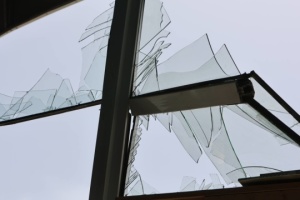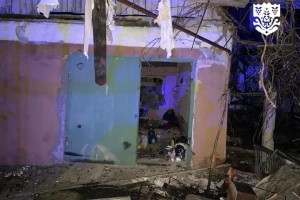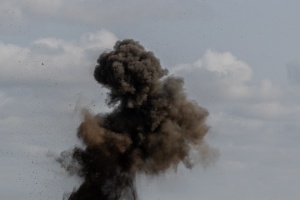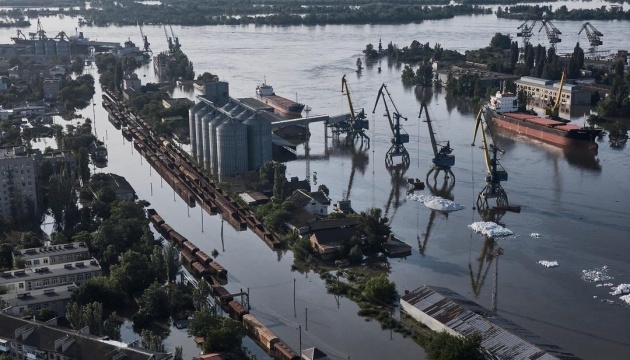
Occupiers destroyed Kakhovka HPP: what awaits southern Ukraine
Thousands of materials have already been written about another act of terrorism by Russia, which provoked an uncontrolled discharge of water from the Kakhovka reservoir. However, even on the third day, it is impossible to comprehend the full extent of the consequences of the disaster, but there is no doubt that terrible damage has been done with far-reaching consequences. And the scale of this destruction goes far beyond Ukraine.
Ukrinform tried to summarize everything in advance. And for ease of reading, we have divided the information into separate sections.
The environment
The so-called Lower Dnipro sands stretch for about two hundred kilometers along the left bank of the Dnipro below Kakhovka. This is where the Oleshky Sands and the Kinburn Spit are located. The Black Sea Biosphere Reserve, Ivory Coast of Sviatoslav National Nature Park, Nizhnedniprovsky National Nature Park, and a number of other protected areas have been created in this part of Ukraine.
Environmentalists predict that the Nizhnedniprovsky Park will suffer the most from the blasting.
"This Dnipro delta is an extremely valuable natural area. That is why the National Nature Park was established there in 2015. Obviously, everything there will be washed away. And these are numerous islands, straits, bays, meadows, and wetlands near the Dnipro. I think the National Park will suffer the most," says environmentalist Oleksandr Sokolenko.
The expert cannot yet say how long it will take to restore the lost flora and fauna. But it will take at least years.
"The consequences will be very significant. It will take years to restore the ecosystem," says the ecologist.
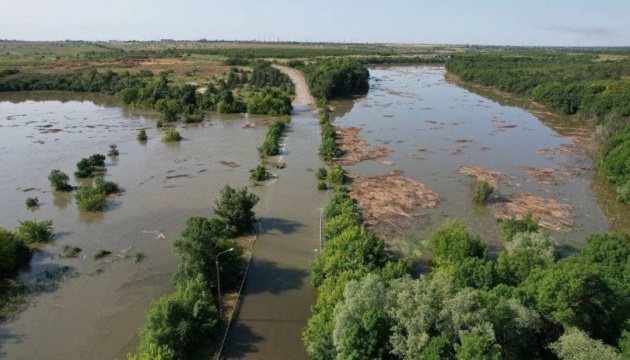
Mykhailo Rusin, PhD in Biology, a researcher at the Kyiv Zoo who has been studying the nature of the Lower Dnipro sands for a long time, talks about endemics - subspecies of animals that are not found anywhere else on the planet.
"These are, for example, the Spalax arenarius and the Falz Fein emur. Both are included in the Red Data Book of Ukraine and the Red List of the International Union for Conservation of Nature (IUCN). The steppe mouse is not endemic. It lives in Crimea, in the East and some other regions. There are also populations in neighboring countries. But it is in the Lower Dnipro sands that about 70% of the number of these animals live."
Most likely, the consequences of rapid flooding for these and other small land animals will be severe, if not fatal.
"Unlike birds or large mammals, they will not be able to physically escape from the water that will flood the places where they live," added Mr. Rusin.
"Actually, about "running away from the water"...
More than 300 animals of the "Fairy Tale Forest" zoo were not able to escape... And it hurts the souls of people who are able to experience such a tragedy.
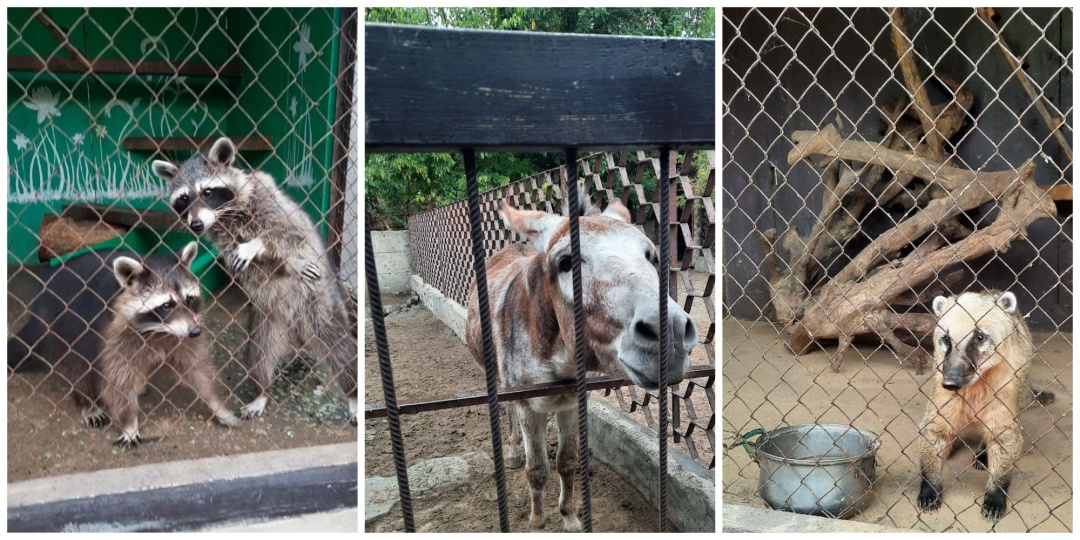
"About 300 animals that our Novokakhovka residents knew and loved were killed. Monkeys Anfisa and Charlik, pony Malysh, donkey Osya, raccoons Mishka, Lelya, Melon, Jaco parrot Venya, raven Roma, marmots, Cameroon goats, sheep, guinea pigs, frettas and many other little pets of ours. Only a couple of swans and ducks escaped. A little swan chick, born only 5 days ago, also died. At 6 am [June 6], when "Dibrova" workers arrived, everything was flooded with water. For more than a year, we have been trying to evacuate the animals from the occupied Nova Kakhovka, but the Russian terrorist army mined the park and blocked all roads. This is a terrible grief, a terrible pain," the zoo staff say.
Another serious problem will be what will remain in the flooded areas after the evacuation.
"People are now quickly evacuating from the Dnipro coast and there will be a large amount of household waste left behind. All this can pollute the waters of the Dnipro. (...) The Russians have left their positions, but there are ammunition and minefields there, and this can cause extreme situations and explosions again," says Yevhen Khlobystov, a professor at the National University of "Kyiv-Mohyla Academy".
A large amount of fresh water contaminated with pesticides and other agrochemicals can enter the Black Sea through the Dnipro River due to the washing away of the surface soil layer in flooded areas.
"In addition to physical impact, we should expect potential chemical and bacteriological pollution. It will all depend on the damage to the dam and the level of water release from the Kakhovka reservoir," Ruslan Havryliuk, head of the National Ecological Center of Ukraine, told Ukrinform.
The water reserves in the Kakhovka reservoir are 5-6 times larger than the Kyiv reservoir. Ukrainian scientists modeled a situation similar to the current one at the beginning of active hostilities. Back then, it was estimated that if the dam was damaged, an intense outpouring of water from the Kyiv Reservoir would last for several days. In the case of the Kakhovka Sea, we should expect the intense outflow to last no less.
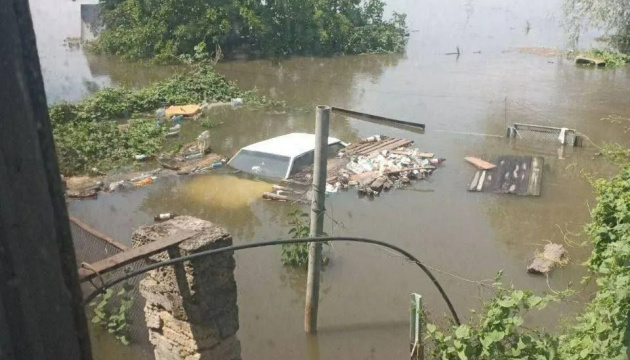
"I think the water will wash away everything from the surface of the earth, including landfills, agricultural enterprises with cattle cemeteries, cesspools, and cemeteries. And all the pollutants will get into surface and groundwater," the expert said.
He is complemented by ecologist, expert of the Network for the Protection of National Interests ANTS Oleh Lystopad: "All this organic matter in the warm season will lead to the development of infectious agents. Wells, springs, and wells will be flooded. When it melts, these water sources will not be available for a long time. Similarly, the water in the Dnipro will not be of high quality immediately after the water recedes."
According to the ecologist, hygienists have a huge amount of work to do.
"Even where the water will be purified, it will be necessary to add a huge amount of chemicals to it. In particular, chlorine and aluminum compounds. This will affect the towns located on the banks of the Kakhovka reservoir the most. Nikopol in particular," added Mr. Lystopad.
In addition, experts predict that when the reservoir level drops, a large number of invertebrates, mollusks, crustaceans will die, and rare animals live in the flooded areas, and there is a threat of losing entire species.
"There will be no more fish there, we will lose invertebrates, mollusks, crustaceans, and this is a huge loss. We will return to 1950. During the existence of the reservoir, the ecosystem adapted to new conditions, and now it is regressing to the previous conditions. This is stressful for the ecosystem," emphasizes Oleh Lystopad. - "And the areas to be flooded are home to rare animals, some of which are found only in Ukraine. The loss of a species is a loss for nature and humanity."
Finally, a separate risk is the potential ingress of hazardous substances from industrial enterprises into the water. It is reported that at least 150 tonnes of machine oil has already entered the Dnipro, and there is a risk of further leakage of more than 300 tonnes.
Energy
The loss of Kakhovka HPP will not have any impact on the Ukrainian power grid at this point. Since September 2022, after the Ukrainian staff was moved out of the plant, its capacity has not served the needs of the Ukrainian power grid. The explosion of Kakhovka HPP has not affected the operation of the power grid so far.
However, in the long term, the explosion of the Kakhovka HPP is a risk that:
- the risk that hydropower, which was used to balance the country's power system, will not be able to operate at the required capacity.
- loss of 335 MW of renewable energy capacity. This is 5% of Ukraine's hydropower capacity (7,530 MW), so the losses are significant but moderate.
-
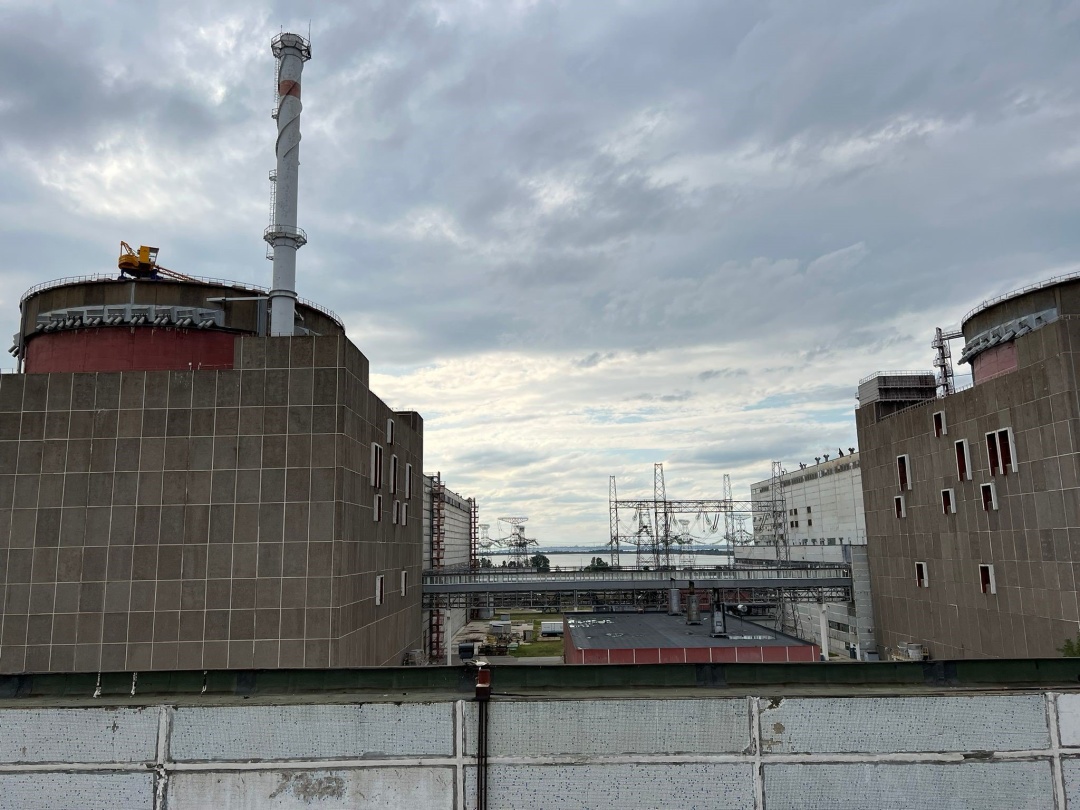
As a result of the dam blowing up, a drop in the water level in the Kakhovka Reservoir could pose a potential threat to the temporarily occupied Zaporizhzhia NPP. Water from the Kakhovka Reservoir is needed for the plant to receive water for turbine condensers and safety systems.
Currently, ZNPP's cooling pond is filled sufficiently to ensure its safe operation. Currently, the situation at ZNPP is under control, Ukrainian personnel are monitoring all indicators.
Oleksandr Starukh, former Head of Zaporizhzhia Regional State Administration, reminded that ZNPP is not operating at full capacity now, so less water is needed to cool the reactors than would be required in normal operation.
However, the situation may still become critical. If the water level in the reservoir used to cool the ZNPP reactors drops below 12.7 meters, IAEA Director General Rafael Grossi warned.
Agriculture
Meanwhile, the Ministry of Agrarian Policy and Food of Ukraine reported that next year the region's fields could turn into a desert.
"Irrigation of 94% of agricultural land in Kherson region, 74% of fields in Zaporizhzhia region and 30% in Dnipropetrovs'k region depended on the Kakhovka reservoir. In total, this is more than 500,000 hectares that will become unsuitable for agriculture," the agency warns.
Denys Marchuk, deputy head of the All-Ukrainian Agrarian Council, emphasizes the same point. According to him, the left part of the Kherson region will suffer greatly because it was most dependent on irrigation from the Kakhovka reservoir: "The North Crimean and Kakhovka canals provided irrigation for more than 500,000 hectares of land. Therefore, we will find ourselves in a situation where it will be impossible to engage in agriculture in these areas.
There may be a few farms that will survive on wells, but these are not the same volumes, he emphasizes.
"To be more specific, we are actually losing 14% of total exports. Because one of the best years was 2021. About 4 million tonnes of grain were grown in the Kherson region. This is the export potential that allowed farmers to earn money and develop their production areas," Mr. Marchuk explained.
And it's not just about grain, but also about the survival of dairy farms, which have been built in recent years - it will be difficult to keep livestock without growing fodder.
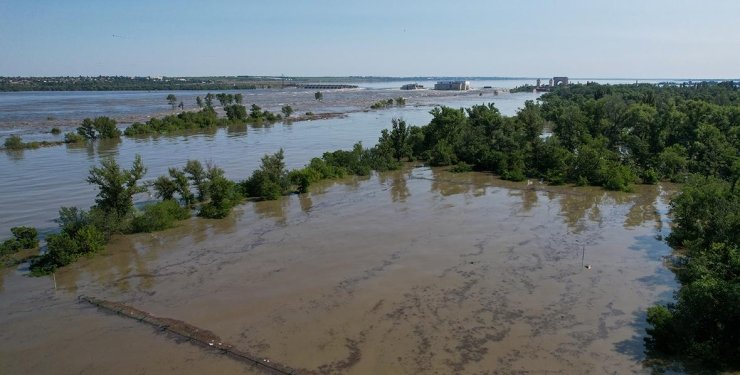
Vegetable production will be the most affected.
"About 35% of mainland Ukraine's supply of borscht set - onions, carrots, beets, cabbage - came from the territories of Kherson and Zaporizhzhia regions. Accordingly, if there is no access to water, we will lose the industry for years," the agro-expert says.
As a result, Denys Marchuk says, many producers are beginning to diversify, for example, Cherkasy region will be growing more vegetables: "In Kherson region, unfortunately, we will not be able to grow anything until the hydroelectric power station is restored."
At the same time, Maksym Soroka, a scientist and environmental safety expert, predicts a "hybrid famine in Ukraine."
"You can't survive on pasta or maize alone for long," warns Mr. Soroka. "The economy of communities, especially in the Nikopol and Marhan regions, where there were many greenhouses of private farmers, depended on the Kakhovka Reservoir. These farmers provided greens and vegetables to all regions of central Ukraine. Now this will be in question."
This is a disaster. But there is a way out. The scientist says that it is necessary to increase the load on other areas in the middle cascade of the Dnipro. And perhaps some of the agricultural land should be re-profiled.
"The work of farmers is an issue that is being actively discussed and people are trying to figure out what to do with these communities. The scientist is confident that a solution will be found. Perhaps Ukraine will benefit from the experience of Israel, which built its hybrid reclamation system. In the near future, at least this year, there will be a shortage and rise in price of "green" food products," says Maksym Soroka.
Fisheries industry
The consequences of the destruction of the Kakhovka HPP will be more than noticeable for the fishery.
"The death of fish, both young and adults, is already being recorded. The spawning season has just ended and due to the drop in water levels, the eggs will dry out in the dried-up areas. In addition, the reservoir's fauna carried by the water flow to the floodplains formed below the Kakhovka HPP dam will also die. As the "flood" wave will later decrease, these biological resources will end up on land," the Ministry of Agrarian Policy said in a statement.
The ministry added that another problem will be getting into the salty waters of the Black Sea, and thus the death of freshwater fish and other biological resources. And the Black Sea fauna may also die from the massive influx of fresh water.
According to preliminary estimates, the destruction of the Kakhovka HPP could result in losses to the fishing industry from the death of adults alone, which could reach 95,000 tonnes or about UAH 4 billion. In total, according to preliminary estimates, losses from the death of all bioresources will amount to up to UAH 10.5 billion.
"The negative consequences of the devastation of aquatic bioresources will be evident for several years in a row, even if the Kakhovka reservoir bed is filled in the near future. Since the restoration of the quantitative and qualitative composition of fish populations and the restoration of the food base will take a long time," the ministry warned.
The Ministry of Agrarian Policy emphasized that these are only preliminary estimates, and final conclusions can only be made when the water level stabilizes.
Logistics
Shipping on the Dnipro will be impossible for the next few years - roads in the lower reaches of the Dnipro, bridges, berths, and protective dams have been destroyed and flooded.
The ports in Nikopol, Kamianka-Dniprovska and Enerhodar will be out of service for a long time. The railroad tracks connecting Zaporizhzhia and Dnipro with Crimea, Kryvyi Rih and Donbas will be washed away and destroyed.
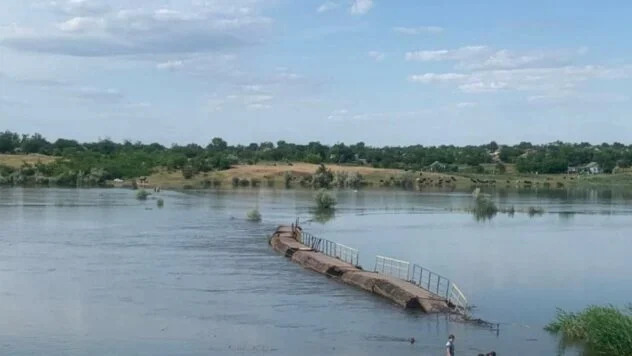
Elevator facilities located on the banks of the Dnipro River were also destroyed or damaged. In particular, the "Kozatske" branch of the "Nibulon" agricultural enterprise was destroyed.
"Nibulon's infrastructure on the Dnipro was destroyed before this crime. In particular, we did not operate the flooded "Kozatske" branch, which was destroyed back in 2022, and the occupied Holoprystanska and Kamianka-Dniprovska branches," NIBULON said on its website.
But that's not all....
The Elevatorist website provides a list of elevators that are on the line of flooding and could be affected by the Kakhovka hydroelectric power plant explosion:
- "Mykilske Grain-Collecting Station (GCS) - 12,000 tonnes of simultaneous storage, port elevator.
- "Tyahinske GCS - 23,000 tonnes of simultaneous storage, port elevator,
- "Dnepryanske GCS - 16,000 tonnes of simultaneous storage, port elevator,
- "AVE (Lviv GCS) - 17,000 tonnes of simultaneous storage, linear elevator.
- Green-Time LLC is Ukraine's largest vegetable storage facility, which could store up to 50,000 tonnes of vegetables at a time. The company accumulated the products of local farmers for further transportation within Ukraine and for export.
Crimea
The explosion of the Kakhovka hydroelectric power plant will affect the water supply to the occupied Crimea. The North Crimean Canal, which began to fill up after Russia's invasion of Kherson region, will be left without water again.
"The canal was combined into a large hydraulic structure, including the Kakhovka HPP. And if the water level drops rapidly - and it is falling - water will simply not be able to enter the canal. It will only be possible to pump it with super-powerful pumps, but that will not happen," explains Serhiy Gapon, head of the GIS laboratory at the World Data Center for Geoinformatics and Sustainable Development.
For the occupation authorities in Crimea, this is not a problem at the moment, because there has been a lot of precipitation on the peninsula in recent months, and local reservoirs are now full. But this, as experience shows, is a temporary phenomenon.
Military component
In an exclusive commentary to Ukrinform, Lieutenant General Serhii Naiev, Commander of the Joint Forces of the Armed Forces of Ukraine, said that the military command of Ukraine had anticipated the possibility of blowing up the Kakhovka hydroelectric power plant in advance.
"There are relevant calculations. Now the command is taking measures to ensure the safety of the civilian population. As for the obstruction of our offensive, the military command fully took into account such enemy treacherous actions, and accordingly, it should not hinder our offensive," General Naiev emphasized.
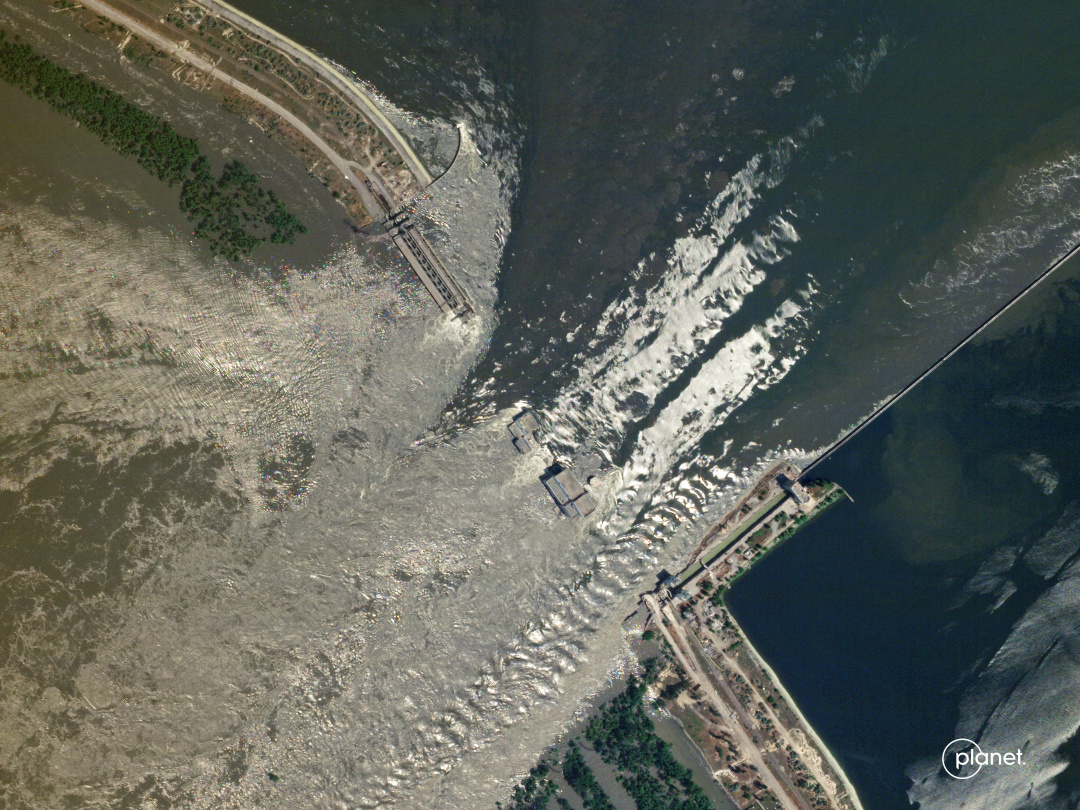
NSDC Secretary Oleksii Danilov also assured that "nothing and no one, not a single Russian, will stop the liberation of Ukraine, the time for which has come."
Military expert Serhii Grabsky first emphasized that the Russians destroyed the defensive positions they had been building with their own hands.
"This is a ridiculous decision on their part," he said.
"It was important for us that the enemy stayed on the territory of the Kherson Triangle, given that the Armed Forces of Ukraine have long-range strike systems at their disposal. If our troops had come to the Azov Sea coast, parts of the Russians on the left bank of the Dnipro would have been blocked and the situation would have been the same as on the right bank.
"In other words, we would have forced them to make a 'gesture of goodwill' without losing people and equipment that we could have lost in the event of an amphibious operation," Mr. Grabsky believes.
However...
"Our actions to cross the Dnipro were unlikely, they would have entailed heavy losses. After crossing the river, we still had to hold the bridgehead... But the enemy still played it safe and blew up the dam," says Roman Kostenko, an MP and military man.
One of the immediate military consequences of the explosion is an increase in the distance between the Ukrainian and Russian armies. According to rough estimates, it will be about 10 kilometers.
"Now some weapons will no longer reach Kherson, and at the same time, some will not reach the Russians. But so far we are only predicting this, everything will have to be "flown and reconnoitered," summarized Mr. Kostenko.
Myroslav Liskovych, Lana Samokhvalova, Liubov Baziv, Kyiv
In addition to Ukrinform's own sources, the text was written using publications from "Ukrainska Pravda", "Suspilne", "TSN", "Forbes Ukraine", "Radio Liberty", and "Babel."

